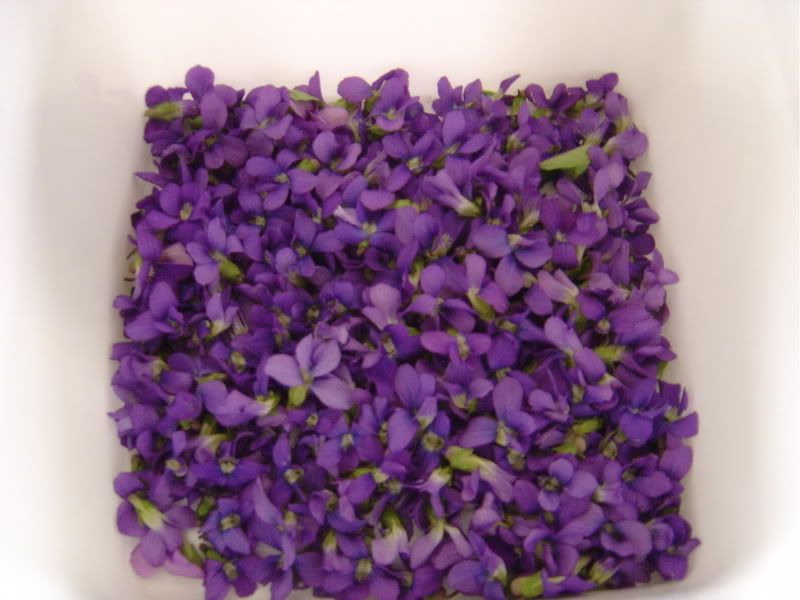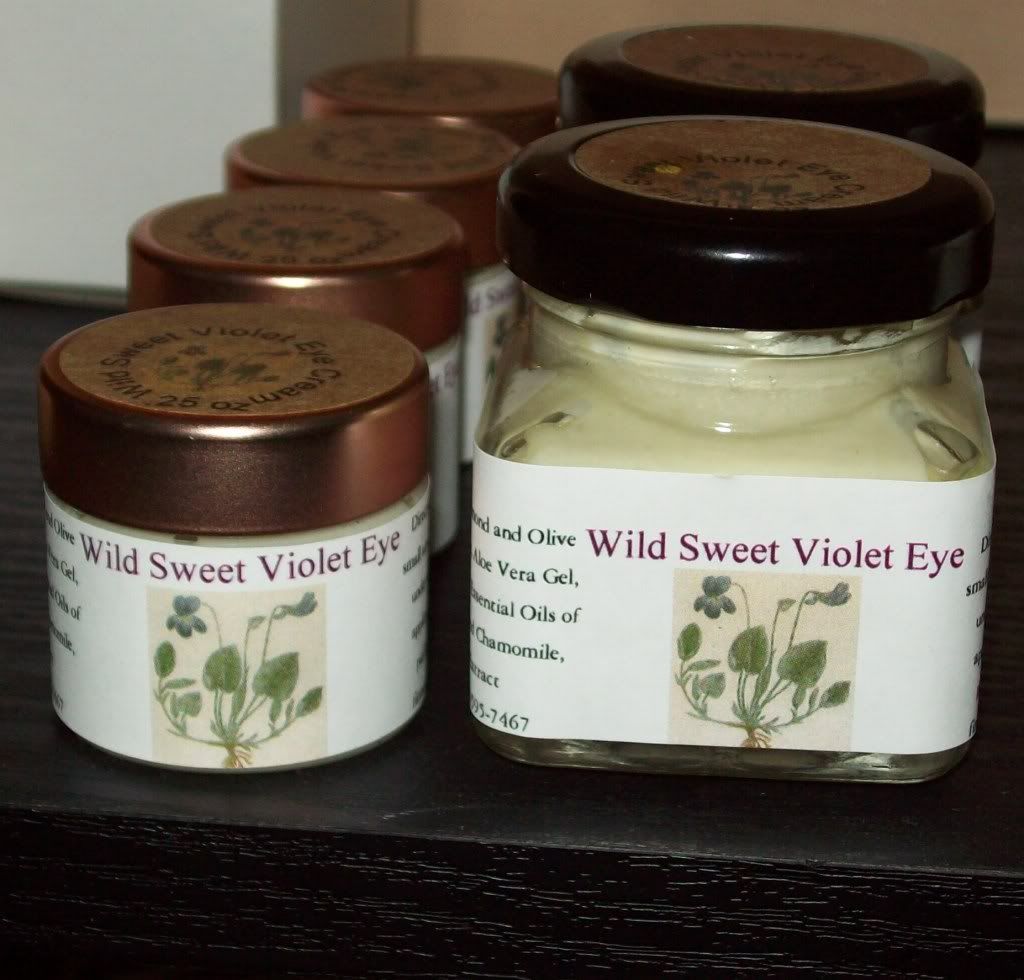
This is the most common species, with a sterile violet-colored flower that blooms in the spring. There are no leaves on the flower stalk. The heart-shaped, shallow-toothed leaves arise separately from the ground. They're good to eat in springtime, but become tough and coarse in the summer.
Poisonous dwarf larkspur (Delphinium tricorne) has a similar violet flower, but with a "spur" behind the flower, and a different leaf. Monkshood (Aconitum uncinatum), also poisonous, has a large, helmet-like upper sepal that covers 2 petals.
Violets grow in partially shaded spots in moist woods, and in meadows and gardens. They spread by underground rhizomes (which are toxic), creating dense stands of plants.

Sherbets usually contain water, sugar, and artificial flavors. This one, using natural thickeners and sweeteners, provides an especially rich setting for these luxuriant flowers.
4 cups water
1/4 cup grape seed or canola oil
1/4 cup vegetable glycerin
1/4 cup raw cashews
1?4 cup lecithin granules (available at health food stores
2 tbs. flaxseeds
2 tsp. liquid stevia
2 tsp. freshly grated orange rind
1/2 tsp. salt
2 cups violet flowers
1. PurÈe all ingredients except the violets in a blender.
2. Freeze in an ice cream machine according to the manufacturer's directions.
3. Stir in the violet flowers
Makes 5-1/2 cups
Preparation time: 20 minutes
White Violets are also edible.

Violets have been used medicinally for centuries. There is some speculation as to whether Violets and their extracts are useful in cancers and tumors, and an experiment done in 1960 allegedly resulted in a Violet extract damaging tumors in mice. Another story has it that a man with colon cancer was cured by eating Violet leaves, but apparently he had to eat a 1,600 square foot nursery bed of them to get this effect.

The leaves and flowers of Violets do have expectorant properties, and work well in cases of respiratory disorders such as bronchitis, colds, and coughs. One recipe calls for 1 tablespoon of Oil in a cup of water to be sipped slowly four times a day. Alternatively, making a Tea to use as a gargle, or making a syrup by adding honey to thicken the tea are also valid ways to use this plant to combat these symptoms. Ingesting a tea made of violet leaves is reportedly also effective as a laxative and for insomnia, and there are reports in the literature that Violets contain an aspirin-like substance that in a tea may be helpful in reducing the symptoms of hangovers. This aspirin-like effect has also been reported as being effective externally in reducing headache and neck pain. Pound the leaves into a paste, adding water and oatmeal as needed, then apply to a warm compress and place on the back of the neck. This also works for the pain of rheumatism when applied to the affected area. Capsules can be made for internal use by pulverizing the leaves and making a powder.
Violets have antiseptic properties that may be helpful in relieving symptoms of various skin eruptions and sores when made into an Ointment and applied as needed.
Wonderful for eye and face creams.

Although it is reported that ingesting large quantities of Violet seed may cause vomiting, these plants are safe, and as such are a good plant for the inexperienced herbalist to use for experimentation.
I happen to love these little spring flowers!
ReplyDeleteGreat Share my Heart Sister!!!
I am off to the grocery store this morning...need to pack in some fruit and vege's, lol. Going to get hotter again in a few days so will get 'er done now!
I love you!
xoxoxox